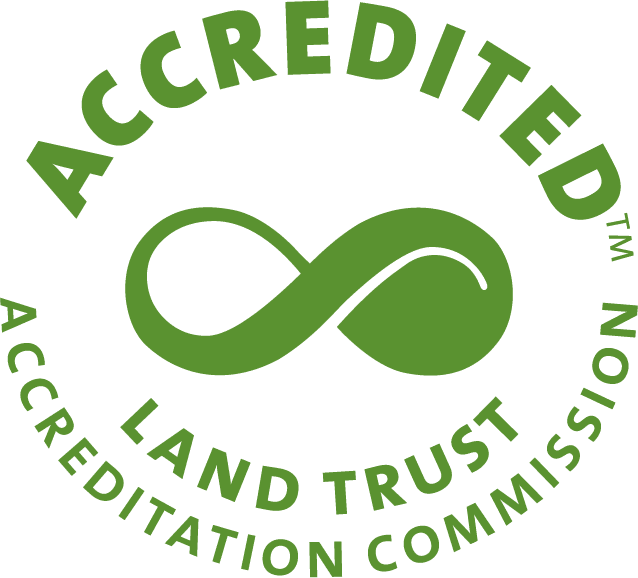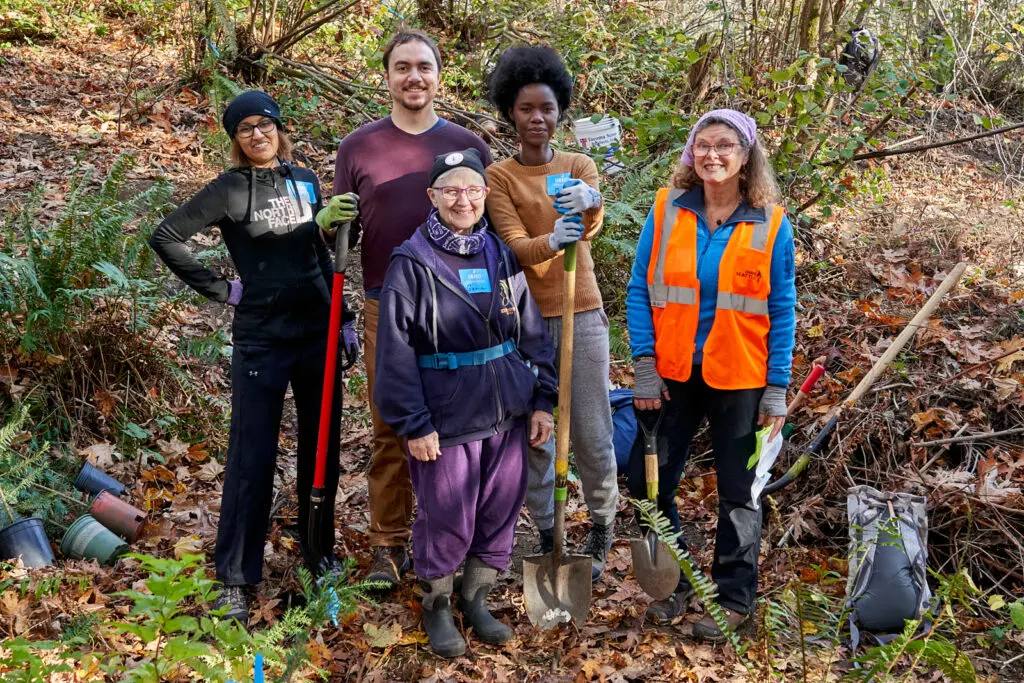Our Evergreen Restoration 'Adopt an Acre' Program restores land in multiple phases.
Phase 1: Site Preparation
- Addressing noxious weeds that harm ecosystems and threaten native plant species.
- Forterra’s lands may require additional support before noxious weed removal or planting.
Phase 2: Planting and Mulching
- Plant selection based on site conditions, ecosystem types, and climate resilience.
- Mulching benefits plant growth and helps in weed suppression and soil quality improvement.
Phase 3: Plant Establishment
- Ongoing invasive removal, mulching, and other maintenance to support native plant growth.
- Monitoring in years 3 and 5 with a standardized monitoring protocol allows us to track progress and re-planting if plant survival rates drop below 70%.
Phase 4: Monitoring and Site Support
- Noxious Weed Cover: If the noxious weed cover is greater than 10%, we will re-enroll the site. If class A, or B noxious weeds are present we will re-enroll the site.
- Native Species Cover: If the native plant cover is less than 30%, we will re-enroll the site.
- As an accredited land trust, Forterra’s committed to monitoring the site locations annually after the program graduates. This allows us to monitor the lands for ecological health and manage evolving environmental conditions.
- For more information on the 4 phases of restoration read pages 35-70 of this guide.
- Field partners agree to track tree survivor rate after three years and report this information back to Forterra. At the end of the three-year monitoring period, if tree survivorship falls below 50% of the initial tree installation, ERP will provide replacement trees for the Field Partner to meet the 50% survivorship rate. Field Partners can also provide their own replacement trees on the site as needed to meet program or restoration goals before the three-year monitoring period ends. If a Field Partner working on private land loses access to that site and/or the landowner no longer agrees to participate in the Evergreen Restoration program, Evergreen Restoration Program requests that the Field Partner replace the trees lost and establish a new planting site.
What are the benefits of trees?


- A mature tree can store 50–100 gallons of water during large storms (Fazio 2010).
- Green streets, rain barrels, and tree planting are estimated to be three to six times more effective in managing stormwater per $1,000 invested than conventional methods (Foster et al. 2011)
- Each year, an acre of trees absorbs the amount of carbon produced by driving a car for 26,000 miles (Nowak 2011).
- The Puget Sound region’s forests provide measurable, valuable services that benefits us every day. In 1998, American Forests, a nonprofit citizens’ conservation organization, analyzed Washington State’s urban forests. Its study revealed that these trees removed 38,990 tons of air pollution — a service that is valued at $261.6 million in 2019.
- Conifers, specifically, can remove 50 pounds of particulate pollutants from the air per year (Dwyer et al. 1992), which is correlated with a reduced incidence of asthma in children and other related respiratory health issues in people of all ages (Lovasi et al. 2008).



